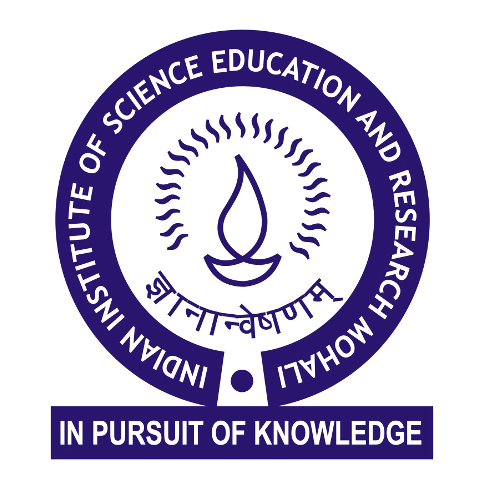Events Calendar
VUV Photoionization Study of Astrochemically Relevant Molecules
Tuesday 12 November 2024, 04:00pm
Dr Mayank Saraswat
Location : AB2-5A
Abstract:
The presence of polyaromatic hydrocarbons (PAHs) in the interstellar medium has been postulated since the late 1980s due to diffuse infrared emission bands, but identifying individual PAHs has been challenging. [1] Only in 2022 was a specific PAH, indene, detected (McGuire et al. and Cernicharo et al.). This has been accompanied with a few cyano-substituted PAH detections in the past few years. Other discoveries of smaller cyclic and aromatic molecules in the ISM has set up for a very exciting time as we start to understand the PAH chemistry in space.
Photoelectron photoion coincidence spectroscopy (PEPICO) is a synchrotron-based, universal, sensitive, and multiplexed detection tool, and has been widely applied in astrochemistry, catalysis, combustion, and gas-phase reactions to identify stable and reactive intermediates. The pyrolysis intermediates and products are identified isomer-selectively through their photoion mass-selected threshold photoelectron spectrum (ms-TPES) in comparison with reference spectra. [2]
In my talk, I will discuss three projects involving radicals, diradicals, and nitrenes, focusing on their rearrangement pathways to astrochemically relevant molecules. In the first part, I will cover the generation of benzyl radical derivatives via flash vacuum pyrolysis and their isomerization to interstellar medium (ISM)-detected compounds, including fulvenallene and 1-, 2-, and 5-ethynylcyclopentadienes, using ms-TPES. The second part will focus on the photoelectron spectroscopic characterization of 2-naphthylnitrene and its thermal rearrangement to ISM-detected cyanoindenes. Finally, in the last part, I will present the photoionization of the N-carbazolyl π-radical and the characterization of its antiaromatic nitrenium ion. [3-5] To support these findings, we conduct Franck-Condon simulations of the respective species, assigning the observed signals to vibrational progressions in the corresponding cations.
[1] Joblin, C.; Tielens, A.; Bierbaum, V.; LePage, V.; Snow, T. European Astronomical Society Publications Series, 2011, 46, 427-440.
[2] Sztaray, B.; Voronova, K.; Torma, K. G.; Covert, K. J.; Bodi, A.; Hemberger, P.; Gerber, T.; Osborn, D. L. J. Chem. Phys. 2017, 147, 013944.
[3] Saraswat, M.; Portela-Gonzalez, A.; Karir. G.; Mendez-Vega, E.; Sander, W.; Hemberger, P. J. Phys. Chem. A 2023, 127, 8574–8583.
[4] Saraswat, M.; Portela-Gonzalez, A.; Mendez-Vega, E.; Karir. G.; Sander, W.; Hemberger, P. Phys. Chem. Chem. Phys.2023, 25, 31146-31152.
[5] Saraswat, M.; Portela-Gonzalez, A.; Mendez-Vega, E.; Sander, W.; Hemberger, P. J. Phys. Chem. A 2024, https://doi.org/10.1021/acs.jpca.4c05855
The presence of polyaromatic hydrocarbons (PAHs) in the interstellar medium has been postulated since the late 1980s due to diffuse infrared emission bands, but identifying individual PAHs has been challenging. [1] Only in 2022 was a specific PAH, indene, detected (McGuire et al. and Cernicharo et al.). This has been accompanied with a few cyano-substituted PAH detections in the past few years. Other discoveries of smaller cyclic and aromatic molecules in the ISM has set up for a very exciting time as we start to understand the PAH chemistry in space.
Photoelectron photoion coincidence spectroscopy (PEPICO) is a synchrotron-based, universal, sensitive, and multiplexed detection tool, and has been widely applied in astrochemistry, catalysis, combustion, and gas-phase reactions to identify stable and reactive intermediates. The pyrolysis intermediates and products are identified isomer-selectively through their photoion mass-selected threshold photoelectron spectrum (ms-TPES) in comparison with reference spectra. [2]
In my talk, I will discuss three projects involving radicals, diradicals, and nitrenes, focusing on their rearrangement pathways to astrochemically relevant molecules. In the first part, I will cover the generation of benzyl radical derivatives via flash vacuum pyrolysis and their isomerization to interstellar medium (ISM)-detected compounds, including fulvenallene and 1-, 2-, and 5-ethynylcyclopentadienes, using ms-TPES. The second part will focus on the photoelectron spectroscopic characterization of 2-naphthylnitrene and its thermal rearrangement to ISM-detected cyanoindenes. Finally, in the last part, I will present the photoionization of the N-carbazolyl π-radical and the characterization of its antiaromatic nitrenium ion. [3-5] To support these findings, we conduct Franck-Condon simulations of the respective species, assigning the observed signals to vibrational progressions in the corresponding cations.
[1] Joblin, C.; Tielens, A.; Bierbaum, V.; LePage, V.; Snow, T. European Astronomical Society Publications Series, 2011, 46, 427-440.
[2] Sztaray, B.; Voronova, K.; Torma, K. G.; Covert, K. J.; Bodi, A.; Hemberger, P.; Gerber, T.; Osborn, D. L. J. Chem. Phys. 2017, 147, 013944.
[3] Saraswat, M.; Portela-Gonzalez, A.; Karir. G.; Mendez-Vega, E.; Sander, W.; Hemberger, P. J. Phys. Chem. A 2023, 127, 8574–8583.
[4] Saraswat, M.; Portela-Gonzalez, A.; Mendez-Vega, E.; Karir. G.; Sander, W.; Hemberger, P. Phys. Chem. Chem. Phys.2023, 25, 31146-31152.
[5] Saraswat, M.; Portela-Gonzalez, A.; Mendez-Vega, E.; Sander, W.; Hemberger, P. J. Phys. Chem. A 2024, https://doi.org/10.1021/acs.jpca.4c05855
website policy
Connect with us
IISER Mohali, Knowledge city, Sector 81, SAS Nagar, Manauli PO 140306
Telefax : 2240266, 2240124
-
+91 - 172 - 2240266
- +91 - 172 - 2240266


